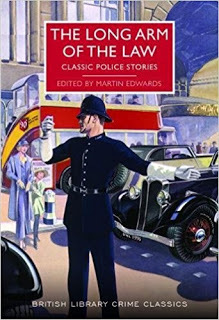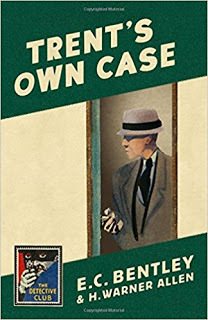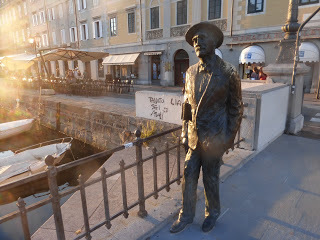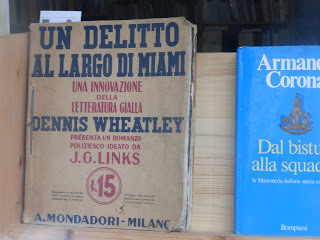Martin Edwards's Blog, page 139
August 14, 2017
The Long Arm of the Law

We tend to associate classic crime fiction with amateur sleuths, Wimsey, Sheringham, Marple, and company. In reality, though, police stories abounded during the first half of the twentieth century. The "police procedural" may be thought of as a concept of the Fifities onwards, but Freeman Wills Crofts and others were writing books about meticulous police investigations long before the days of Lawrence Treat, Ed McBain, and Maurice Proctor.
Classic police stories are celebrated in my latest anthology in the British Library's Crime Classics series. The Long Arm of the Law charts the development of the police story over more than half a century. The first entry is a very obscure one, "The Mystery of Chernholt" by Alice and Claude Askew. And we come right up to the (relatively) modern era with Sergeant Cluff featuring in "The Moorlanders" by Gil North.
I really enjoyed putting this book together. It is, believe it or not, the third of my anthologies that the British Library have published this year alone - and there's one more still to come! - and I like to think that this reflects an increasing interest in short crime fiction. Books of this kind, though I say it myself are a great way of discovering new writers and new detective characters. Anthologies are always a mixed bag, and I do aim for quite a high degree of variety, but there's sure to be something for every crime fan - or so I hope.
This book contains, it's fair to say, a higher number of obscure stories than my other anothologies in the series, although several of the authors are well-known names - Crofts, Henry Wade, Christianna Brand, John Creasey, and Nicholas Blake among them. My researches benefited enormously from help given by a number of experts, including John Cooper, Jamie Sturgeon, and Nigel Moss. I leave it to readers to judge the result, but I'm optimistic that this book will provide crime fans with a great deal of entertainment, and some truly fascinating new discoveries.
Published on August 14, 2017 03:26
August 11, 2017
Forgotten Book - Trent's Own Case

Unlike many authors associated with Golden Age detective fiction, Edmund Clerihew Bentley was far from prolific. Yet his impact on the genre was immense. Trent's Last Case is seen by many people (including me) as the effective catalyst for the development of the classic whodunit after the First World War, and when Bentley's old friend G.K. Chesterton died, Bentley was a popular choice to succeed him, and to become the second President of the Detection Club. This more or less coincided with the publication of Trent's Own Case, which records Philip Trent's long-awaited return to the fray of detection.
Bentley's short stories about Trent were also collected in a volume entitled Trent Intervenes. But although Trent's Last Case has been relatively easy to find over the years, the other two Trent books have been less widely available. Now Harper Collins have reissued all three books together as part of their Detective Story Club imprint.
I feel confident that crime fans will be delighted by this initiative, though I should declare my own involvement - I have written a new introduction to Trent's Own Case. This commission caused me to re-read the book recently, and in so doing I found I revised my original opinion of it somewhat. I read it first as a teenager, expecting something similar to the first Trent book. It's much better, though, to judge the book on its own merits,not least because it was actually a collaboration - Bentley co-wrote the novel with his friend H. Warner Allen, and the storyline features Warner Allen's own detective character, the wine merchant Mr Clerihew (who was named in Bentley's honour). It's a well-made story, and still very readable.
In The Golden Age of Murder, I discuss the "Trent Dinner" held in 1936 to celebrate the book's publication, and one of my most precious possessions is a copy of the first edition signed by those who attended the dinner. I also talk about this in a little more detail in the "Collecting Crime" section on my website.. The addition of this book, and the two other Trent titles, to the Detective Story Club list, is very welcome.
Published on August 11, 2017 03:43
August 9, 2017
In the footsteps of Agatha and James Joyce
 I've been intrigued by the city and sea port of Trieste since reading Andrew Eames' excellent The 8.55 to Baghdad, in which he follows the route taken by Agatha Christie across Europe to the Middle East. It sounded a fascinating place, and now I've been lucky enough to spend a few days there, meeting up with my well-travelled daughter and her boyfriend, I can report that I found it even more appealing than I expected from Eames' description. Was it just that I was escaping the rainy British summer for intense sunshine, interrupted only by one thunderstorm, the most dramatic I've ever experienced? No, it's a really interesting place, the product of a varied history; its strategic significance meant that it changed hands several times, though it's been part of Italy for the past seventy years, as well as for a period before then.
I've been intrigued by the city and sea port of Trieste since reading Andrew Eames' excellent The 8.55 to Baghdad, in which he follows the route taken by Agatha Christie across Europe to the Middle East. It sounded a fascinating place, and now I've been lucky enough to spend a few days there, meeting up with my well-travelled daughter and her boyfriend, I can report that I found it even more appealing than I expected from Eames' description. Was it just that I was escaping the rainy British summer for intense sunshine, interrupted only by one thunderstorm, the most dramatic I've ever experienced? No, it's a really interesting place, the product of a varied history; its strategic significance meant that it changed hands several times, though it's been part of Italy for the past seventy years, as well as for a period before then. Christie wasn't the only literary figure to be associated with Trieste. Joyce, Kafka, and Rikle are among the others, and Joyce's statue (clutching a book) is to be found on the bridge over a remarkably short canal in the midst of the old quarter, where the architecture hints at the cosmopolitan influences on Trieste's past.
Christie wasn't the only literary figure to be associated with Trieste. Joyce, Kafka, and Rikle are among the others, and Joyce's statue (clutching a book) is to be found on the bridge over a remarkably short canal in the midst of the old quarter, where the architecture hints at the cosmopolitan influences on Trieste's past.


There's a lot to see in Trieste, and I enjoyed a wide range of sights, including the old Roman Theatre. I also came across a second hand bookshop which had a copy of Murder off Miami, the first "murder dossier" by Dennis Wheatley and J.G.Links in the window - the Italian version. Sadly, the shop was closed, and it was my last evening there, so I never got to find out how much they wanted for it. Quite a bit, I guess! The old cathedral and castle on the hill above the city centre are well worth a short climb, and there are plenty of other sights within a fairly short walk.
 A bus ride away is the Risiera di San Sabba, an old rice factory which the Nazis converted into a bizarre and horrific concentration camp. You can still see the prison cells, the death cell, and the site of the crematorium. A museum on the site tells the story of what happened there. It's nothing like as well-known as Auschwitz, but I found the experience deeply moving and thought-provoking.
A bus ride away is the Risiera di San Sabba, an old rice factory which the Nazis converted into a bizarre and horrific concentration camp. You can still see the prison cells, the death cell, and the site of the crematorium. A museum on the site tells the story of what happened there. It's nothing like as well-known as Auschwitz, but I found the experience deeply moving and thought-provoking.



 Further out of Trieste, there are some fabulous places to go. They include the Grotta Gigante, a massive underground cave where we took a guided tour, and Napoleon's Way, where the walk from the obelisk at Opicina to the village of Prosecco takes the route followed by Bonaparte's troops, and offers fantastic views. Best of all perhaps were the gardens and castle of Miramare, which were hugely impressive. Well worth braving the vagaries of the local transport system for. All in all, a memorable trip, which followed an enjoyable day in Milan, and a visit to the amazing cathedral. But what I really didn't expect was that storm, which for close to two hours provided a light show that put the Northern Lights in the shade. Amazing.
Further out of Trieste, there are some fabulous places to go. They include the Grotta Gigante, a massive underground cave where we took a guided tour, and Napoleon's Way, where the walk from the obelisk at Opicina to the village of Prosecco takes the route followed by Bonaparte's troops, and offers fantastic views. Best of all perhaps were the gardens and castle of Miramare, which were hugely impressive. Well worth braving the vagaries of the local transport system for. All in all, a memorable trip, which followed an enjoyable day in Milan, and a visit to the amazing cathedral. But what I really didn't expect was that storm, which for close to two hours provided a light show that put the Northern Lights in the shade. Amazing.


Published on August 09, 2017 07:11
August 7, 2017
The Riverside Murder - 1935 film
Having recorded The Riverside Murder when it was screened by Talking Pictures, I was astonished to find, once I got round to watching it, that the source material was S.A. Steeman's excellent novel Six Dead Men. It has to be said that the script alters the storyline very considerably, and not just because the action is switched to England. But the writing is pretty slick, and that's no surprise, considering that the writer was a good crime novelist in his own right, Selwyn Jepson.
A wealthy financier is murdered by a mysterious gunman, and it soon becomes clear that present at the scene were (at least) two men with a very good reason to kill him. The tontine that features in the original story is, here, turned into a "pact", which means that a number of individuals have motives for murder.
The official detective work is undertaken by affable Inspector Winton (Philip Sydney), aided and abetted by Sergeant McKay (none other than Alastair Sim - apparently this was his first film appearance). But their investigation is interrupted by an intrepid and cheeky young woman who wants to make her name as a crime reporter - this isn't the only film of the 30s to feature such a character, and here she's played by Judy Gunn. Quite a few familiar crime story tropes make an appearance (the threat to take a cop off the case, leading to him to plead for just a few more hours, etc.) But they are handled in a light, entertaining way.
The suspects include one character played by Tom Helmore, who almost a quarter of a century later would make quite an impact as Gavin Elster in Hitchcock's classic Vertigo. The body count rises rapidly as Jepson's script breezes along to a pleasing conclusion. I must say I found it all very enjoyable: a real find.
A wealthy financier is murdered by a mysterious gunman, and it soon becomes clear that present at the scene were (at least) two men with a very good reason to kill him. The tontine that features in the original story is, here, turned into a "pact", which means that a number of individuals have motives for murder.
The official detective work is undertaken by affable Inspector Winton (Philip Sydney), aided and abetted by Sergeant McKay (none other than Alastair Sim - apparently this was his first film appearance). But their investigation is interrupted by an intrepid and cheeky young woman who wants to make her name as a crime reporter - this isn't the only film of the 30s to feature such a character, and here she's played by Judy Gunn. Quite a few familiar crime story tropes make an appearance (the threat to take a cop off the case, leading to him to plead for just a few more hours, etc.) But they are handled in a light, entertaining way.
The suspects include one character played by Tom Helmore, who almost a quarter of a century later would make quite an impact as Gavin Elster in Hitchcock's classic Vertigo. The body count rises rapidly as Jepson's script breezes along to a pleasing conclusion. I must say I found it all very enjoyable: a real find.
Published on August 07, 2017 03:00
August 4, 2017
Forgotten Book - Unexpected Night
I've been prompted to take a fresh look at the work of American whodunit writer Elizabeth Daly after listening to Sarah Ward talking about Daly's books on a couple of occasions recently. Sarah chose Daly as one of her authors to remember at Crimefest, and also discussed her work in some depth at Bodies from the Library. She also suggested that it helps to get a clear picture of the life of Daly's amateur sleuth, Henry Gamadge, if one starts with Daly's first book in the series.
This raises a point that I find very interesting. A great many people I talk to say that they like to begin a series at the beginning. I can understand why. Characters and relationships can sometimes make more sense than if one plunges into a series when it's already very well-established. When my Lake District Mysteries are sold at events, The Coffin Trail, the first in the series, generally sells best. Yet there are downsides to beginning at the beginning. A good author will want to improve, and sometimes a first book will spend quite a lot of time setting the scene. Later books may be more impressive.
I've just read Daly's debut, Unexpected Night, set in 1939, and published a year later, when Daly was already over 60. Compared to most authors working in the Golden Age tradition - and Daly clearly was - she was a late starter, though she did go on to have a long and successful career. This one i's a decent whodunit with a nice, if well-telegraphed, plot twist, and it introduces Gamadge as an affable, youngish expert in manuscripts.
Overall, however, I think it's fair to say that Daly was one of those writers who honed her technique over the years, and some of her later books represent a significant advance on this one. I felt that the basic set-up, about a young but sickly man who comes into a fortune on his 21st birthday was very contrived, and that the pool of suspects was not the most interesting. Gamadge, too, though likeable, is not truly memorable. I'd rate this one as worth a read, but I think Daly's later books tend to be better.
This raises a point that I find very interesting. A great many people I talk to say that they like to begin a series at the beginning. I can understand why. Characters and relationships can sometimes make more sense than if one plunges into a series when it's already very well-established. When my Lake District Mysteries are sold at events, The Coffin Trail, the first in the series, generally sells best. Yet there are downsides to beginning at the beginning. A good author will want to improve, and sometimes a first book will spend quite a lot of time setting the scene. Later books may be more impressive.
I've just read Daly's debut, Unexpected Night, set in 1939, and published a year later, when Daly was already over 60. Compared to most authors working in the Golden Age tradition - and Daly clearly was - she was a late starter, though she did go on to have a long and successful career. This one i's a decent whodunit with a nice, if well-telegraphed, plot twist, and it introduces Gamadge as an affable, youngish expert in manuscripts.
Overall, however, I think it's fair to say that Daly was one of those writers who honed her technique over the years, and some of her later books represent a significant advance on this one. I felt that the basic set-up, about a young but sickly man who comes into a fortune on his 21st birthday was very contrived, and that the pool of suspects was not the most interesting. Gamadge, too, though likeable, is not truly memorable. I'd rate this one as worth a read, but I think Daly's later books tend to be better.
Published on August 04, 2017 02:00
August 2, 2017
Magpie Murders by Anthony Horowitz
Any Golden Age fan is bound to be drawn to Anthony Horowitz's recent novel, Magpie Murders. It's an example of metaficiton, in which Horowitz combines a capable pastiche of a Christie-style whodunit with a contemporary mystery, and a dollop of satire about the publishing business. There are plenty of jokes (the last Horowitz novel I read, The Killing Joke, also gave his wit a pleasing showcase) and there's ingenuity in abundance.
The first half of the book comprises a novel set in the year Horowitz was born, 1955. A cleaner has died in rather mysterious circumstances, and soon her employer, Sir Magnus Pye, is brutally murdered. There is no shortage of motives or suspects - but shortly before the climax, the story comes to a sudden halt. We are then transported to the present, and the publishing. Alan Conway, author of the story, has died, having apparently committed suicide - and the last two chapters of his novel seem to be missing.
Most of the rest of the story is narrated by Conway's editor, Susan, who begins to suspect that in fact Conway was murdered. Once again, she discovers a variety of people with good cause to wish that the author was dead. But which of them is guilty? There's a "least likely person" explanation that is pleasing, even if the motivation is thin. And then, at the end of the story, we are given the solution to the mystery in Conway's novel - and, once more, a suitably unlikely culprit is unmasked..
I like Horowitz's writing very much. He has a real gift for entertainment, as evidenced by his many successes with TV screenplays (which earn more than one mention in the book; I see this not as showing off, but rather as an illustration of his teasing sense of humour) as well as by his fiction. The first half of the book is, at times, rather slow-moving, but this is explained by the need to plant a range of pleasing clues. It's all very cleverly and agreeably handled. An interestingly original take on classic crime fiction which I was very glad to read.
The first half of the book comprises a novel set in the year Horowitz was born, 1955. A cleaner has died in rather mysterious circumstances, and soon her employer, Sir Magnus Pye, is brutally murdered. There is no shortage of motives or suspects - but shortly before the climax, the story comes to a sudden halt. We are then transported to the present, and the publishing. Alan Conway, author of the story, has died, having apparently committed suicide - and the last two chapters of his novel seem to be missing.
Most of the rest of the story is narrated by Conway's editor, Susan, who begins to suspect that in fact Conway was murdered. Once again, she discovers a variety of people with good cause to wish that the author was dead. But which of them is guilty? There's a "least likely person" explanation that is pleasing, even if the motivation is thin. And then, at the end of the story, we are given the solution to the mystery in Conway's novel - and, once more, a suitably unlikely culprit is unmasked..
I like Horowitz's writing very much. He has a real gift for entertainment, as evidenced by his many successes with TV screenplays (which earn more than one mention in the book; I see this not as showing off, but rather as an illustration of his teasing sense of humour) as well as by his fiction. The first half of the book is, at times, rather slow-moving, but this is explained by the need to plant a range of pleasing clues. It's all very cleverly and agreeably handled. An interestingly original take on classic crime fiction which I was very glad to read.
Published on August 02, 2017 03:00
July 31, 2017
Solace - 2015 film review
The script of Solace, a film first shown a couple of years back, apparently began life as a sequel to Se7en, one of the best serial killer movies, and certainly ground-breaking in 1995. Things changed radically along the way, and although director Afonso Poyart acknowledges the influence of the earlier film, and also of Silence of the Lambs, he claims that Solace is not a serial killer film, but aout much more than that, talking about life and death and raising "interesting moral dilemmas".
The film benefits from the casting of Anthony Clancy as John Hopkins, a psychic who works with the FBI, but whose daughter has died from leukaemia. A pair of cops played by Jeffrey Dean Morgan and Abbie Cornish persuade him, against his will, to lend a hand when a series of baflling yet apparently connected murders take place.
The link between the crimes emerges,and Colin Farrell comes into the story, playing Charles Ambrose, whose motives are central to the moral dilemmas Poyart mentions. Hopkins and Farrell are both excellent actors, whose work I've enjoyed numerous times, and here again they do a good job. But they are limited by the material in the script.
For all Poyart's laudable ambition, this seemed to me very much like one more in a long line of flashily put together serial killer movies, with Clancy's psychic gifts providing a distinctive but increasingly irritating gimmick. The story and the performances kept me watching, but the truth is that the serial killer genre has been with us for so long now that greater originality is required than is on offer here. And despite a final twist, it's not a patch on Se7en.
The film benefits from the casting of Anthony Clancy as John Hopkins, a psychic who works with the FBI, but whose daughter has died from leukaemia. A pair of cops played by Jeffrey Dean Morgan and Abbie Cornish persuade him, against his will, to lend a hand when a series of baflling yet apparently connected murders take place.
The link between the crimes emerges,and Colin Farrell comes into the story, playing Charles Ambrose, whose motives are central to the moral dilemmas Poyart mentions. Hopkins and Farrell are both excellent actors, whose work I've enjoyed numerous times, and here again they do a good job. But they are limited by the material in the script.
For all Poyart's laudable ambition, this seemed to me very much like one more in a long line of flashily put together serial killer movies, with Clancy's psychic gifts providing a distinctive but increasingly irritating gimmick. The story and the performances kept me watching, but the truth is that the serial killer genre has been with us for so long now that greater originality is required than is on offer here. And despite a final twist, it's not a patch on Se7en.
Published on July 31, 2017 15:11
July 28, 2017
Forgotten Book - The Blackmailers
Harper Collins' Detective Story Club imprint is by no means confined to Golden Age detective fiction. Hugh Conway and Anna K. Greene are among the significant Victorian crime writers represented in the series. Another is Emile Gaboriau, creator of Monsieur Lecoq, a prototype of the Great Detective, and a master of disguise.
Richard Dalby's introduction contains useful background .The book was first published as Dossier No. 113 in 1867, and has also appeared in English translation as File No. 113. Apparently this original version ran to a massive 145,000 words. Collins commissioned a new translation by Ernest Tristan, which cut the word cut roughly by half while retaining the essentials of the storyline intact. The abbreviated version was called The Blackmailers, and this is the version of the story that has been reissued.
The story gets off to a very good start. A bank is robbed, and only two men appear to have access to the safe that the criminal(s) broke into. Which of them is guilty? Or has something else happened? The official police detective, nicknamed "the Squirrel", is keen but inclined to follow false scents. Before long, the rather enigmatic Lecoq becomes involved, sometimes in disguise.
After a suspenseful build-up, we then move into an extended flashback which charts events of the past which led up to the crime .Despite the (very wise) decision to cut the story in half, this melodramatic storytelling seems to go on forever, and my interest began to wane. This, the third case for Lecoq, is historically significant, but the structural weaknesses show that authors were still trying to figure out how best to tell a mystery story. Conan Doyle experienced similar difficulties with his own longer stories about Sherlock Holmes, but Holmes is an inherently more fascinating character than Lecoq. But, just possibly, without Lecoq there might not have been a Sherlock Holmes.
Richard Dalby's introduction contains useful background .The book was first published as Dossier No. 113 in 1867, and has also appeared in English translation as File No. 113. Apparently this original version ran to a massive 145,000 words. Collins commissioned a new translation by Ernest Tristan, which cut the word cut roughly by half while retaining the essentials of the storyline intact. The abbreviated version was called The Blackmailers, and this is the version of the story that has been reissued.
The story gets off to a very good start. A bank is robbed, and only two men appear to have access to the safe that the criminal(s) broke into. Which of them is guilty? Or has something else happened? The official police detective, nicknamed "the Squirrel", is keen but inclined to follow false scents. Before long, the rather enigmatic Lecoq becomes involved, sometimes in disguise.
After a suspenseful build-up, we then move into an extended flashback which charts events of the past which led up to the crime .Despite the (very wise) decision to cut the story in half, this melodramatic storytelling seems to go on forever, and my interest began to wane. This, the third case for Lecoq, is historically significant, but the structural weaknesses show that authors were still trying to figure out how best to tell a mystery story. Conan Doyle experienced similar difficulties with his own longer stories about Sherlock Holmes, but Holmes is an inherently more fascinating character than Lecoq. But, just possibly, without Lecoq there might not have been a Sherlock Holmes.
Published on July 28, 2017 01:46
July 27, 2017
The CWA Dagger Shortlists
I've returned home after a brief and hectic trip to London that involved a variety of meetings (one of them in the historic Reform Club, which I've never been inside before), a pleasant book-signing session in Hatchards, and finally the CWA Daggers shortlist announcements reception at Waterstone's in Piccadilly.
To deal with the personal stuff first, I'm thrilled to say that my story "Murder and its Motives" has been shortlisted for the CWA Short Story Dagger. This is my fifth appearance on a Dagger list, and it's the third short story of mine to reach this particular shortlist. "Test Drive" did so twelve years ago, and three years later, "The Bookbinder's Apprentice" earned me the Dagger. So I'm naturally very happy.
Happy, too, to see that two other stories from the Detection Club anthology Motives for Murder appeared on the list - those by Michael Ridpath and Len Tyler. What a happy book that has proved to be. I'd also like to say how pleased I am to see Leye Adenie on the shortlist; I've been following his career with keen interest ever since we got to know each other last year. The shortlist also features the legendary James Sallis and Ovidia Yu.
Overall, the event went extremely well, and the attendance was very good. I was especially pleased to meet that fine writer Louise Penny for the first time. The success of the event was due to good work on the part of several people, but I'd like to pay special tribute to Mike Stotter, the CWA Daggers Liaison Officer, an unsung hero of the CWA, who does great work year after year in ensuring that all goes smoothly with the independent judging process. It's that process that ensures the high reputation of the Daggers the world over.
To deal with the personal stuff first, I'm thrilled to say that my story "Murder and its Motives" has been shortlisted for the CWA Short Story Dagger. This is my fifth appearance on a Dagger list, and it's the third short story of mine to reach this particular shortlist. "Test Drive" did so twelve years ago, and three years later, "The Bookbinder's Apprentice" earned me the Dagger. So I'm naturally very happy.
Happy, too, to see that two other stories from the Detection Club anthology Motives for Murder appeared on the list - those by Michael Ridpath and Len Tyler. What a happy book that has proved to be. I'd also like to say how pleased I am to see Leye Adenie on the shortlist; I've been following his career with keen interest ever since we got to know each other last year. The shortlist also features the legendary James Sallis and Ovidia Yu.
Overall, the event went extremely well, and the attendance was very good. I was especially pleased to meet that fine writer Louise Penny for the first time. The success of the event was due to good work on the part of several people, but I'd like to pay special tribute to Mike Stotter, the CWA Daggers Liaison Officer, an unsung hero of the CWA, who does great work year after year in ensuring that all goes smoothly with the independent judging process. It's that process that ensures the high reputation of the Daggers the world over.
Published on July 27, 2017 04:31
July 26, 2017
Hangman's Wharf - 1950 film review
Hangman's Wharf is a very good title, I think. It's the name of a short 1950 black and white film, directed by Cecil H. Williamson. It began life as a BBC radio serial written by John Belden, about whom I have been able to find out nothing. I almost wondered if it was a pseudonym adopted by Francis Durbridge, but there's no evidence of that.
Yet there are one or two Durbridgesque features to the storyline, including one of his favourite devices, the Enigmatic Message which lures our hero to an assignation at the Deserted House where, surprise, surprise, a corpse is waiting for him. There's also a touch of light-heartedness among the mayhem which reminded me of Durbrdge. Perhaps Belden was a disciple.
Dr David Galloway (John Witty) is a talented G.P. with hardly any patients- those were the days! An idealistic, he's opened a surgery in Shadwell, but hasn't endeared himself to the locals. When he gets a message calling him out to an accident on board a boat at Hangman's Wharf, he sets off only to find that he's been misled. But he bumps into a sinister rough-neck and a posh chap who send him packing. Then a warning shout from a young woman (Genine Graham) alerts him to the fact that someone is trying to kill him by dropping a barrel on his head.
The woman is a pretty young journalist, and he and she go to the police. But the affable inspector (Campbell Singer) doesn't beleive their story, and soon it becomes clear that someone is trying to frame the doctor for murder. The plot is nothing special, but it moves along at a decent pace. Singer is the only member of the cast with whom I was familiar, but I thought Genine Graham made the most of a limited role as the doc's love interest. I'm surprised she didn't become better known.
Yet there are one or two Durbridgesque features to the storyline, including one of his favourite devices, the Enigmatic Message which lures our hero to an assignation at the Deserted House where, surprise, surprise, a corpse is waiting for him. There's also a touch of light-heartedness among the mayhem which reminded me of Durbrdge. Perhaps Belden was a disciple.
Dr David Galloway (John Witty) is a talented G.P. with hardly any patients- those were the days! An idealistic, he's opened a surgery in Shadwell, but hasn't endeared himself to the locals. When he gets a message calling him out to an accident on board a boat at Hangman's Wharf, he sets off only to find that he's been misled. But he bumps into a sinister rough-neck and a posh chap who send him packing. Then a warning shout from a young woman (Genine Graham) alerts him to the fact that someone is trying to kill him by dropping a barrel on his head.
The woman is a pretty young journalist, and he and she go to the police. But the affable inspector (Campbell Singer) doesn't beleive their story, and soon it becomes clear that someone is trying to frame the doctor for murder. The plot is nothing special, but it moves along at a decent pace. Singer is the only member of the cast with whom I was familiar, but I thought Genine Graham made the most of a limited role as the doc's love interest. I'm surprised she didn't become better known.
Published on July 26, 2017 03:13



